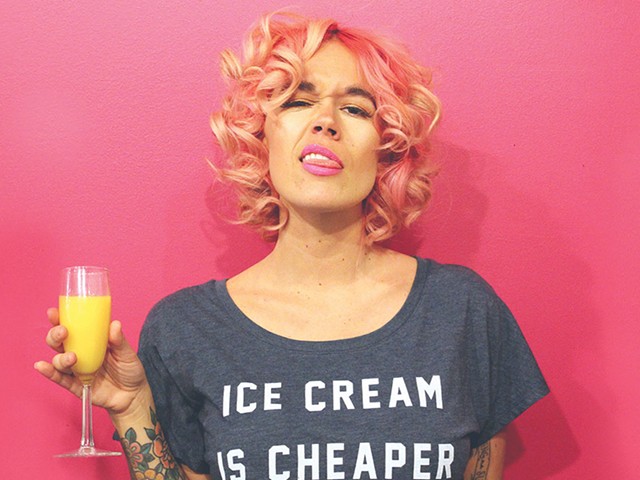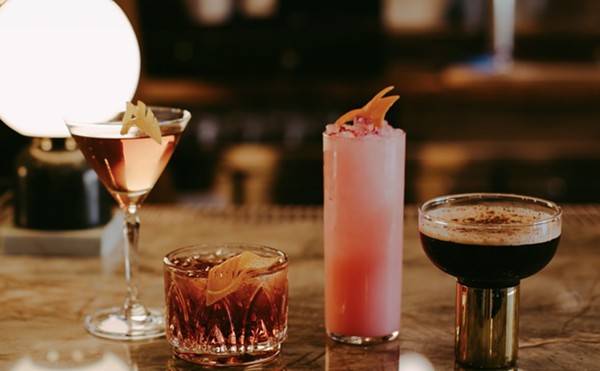As someone interested in beer’s history, specifically from a cultural standpoint, I evolved through life knowing beer as a staple. Not many generations ago, children drank beer on a regular basis. Doctors prescribed beer to nursing mothers. Even in recent years, drinking a beer with your lunch was not cause for dismissal from your job. Heck, some people drank beer while they worked. In short, beer was just a beverage.
After Prohibition, beer became a homogenized, yellow soda, in a cultural sense, so in a way, the craft beer movement of the last few years has rescued it. However, in another sense, it has also hijacked the beverage I have loved since childhood.
Here’s what I mean: During my two trips to the United Kingdom in the late 2000s, I observed that most of the locals I encountered weren’t obsessed with brand. If you offered to buy them a pint, they’d say, “OK, I’ll have a lager.” Or, “I’ll have a stout.” It was style, not brand, that drove their love of beer. They liked the flavors they liked and didn’t seem terribly influenced by the marketing or pedigree. Beer was just beer.
But the modern beer movement, especially in America it seems, is about brand and about styles and variations on styles and on experimental styles and lost historical styles and hybrids and high-gravity brews and weird ingredients and wild yeast strains and strange new hops and barrel-aged brews and … well, you get the picture. The modern movement has opened up a whole new world in which, unlike even five years ago, it seems, beer is like a collectible.
Beer festivals are everywhere, to the point it’s impossible to keep up with them all. People wait in line to get “rare” or limited-quantity beers. Moreover, the rise of the “super bars” like HopCat and World of Beer offer symbols of just how this sudsy phenomenon is growing before our very eyes. (Wasn’t Sergio’s super bar enough?)
Nearly 20 years ago, I wrote my first beer article, and it was for this very publication. The headline: “Trouble Brewing: Microbrewers brace for roadblocks from the Big Three.” Microbrew. That’s a term I thought was cool back in the 1990s — I had no idea what was coming.
As the years progressed, I wrote a number of other beer stories for LEO Weekly, helping introduce now-defunct Pipkin Brewery, welcoming Cumberland Brews and trumpeting the return of Falls City, among others. The bubble popped, and the wave of small brewery products died down slightly, but it found its momentum again and made its way back to shore.
And so I’m glad I continued writing about beer along the way. Why? Part of that has been getting to know the brewers and brewery workers around town, and finding these people to be even more excited about beer than am I. Brewers are among my favorite people on the planet, as they are one part artist, one part scientist and one part eccentric. And while I’m not always sure what to make of the frenzy surrounding beer, I nevertheless embrace it as best I can. Because it beats the days when the best beer I could find was Bass Ale or Heineken.
And that is how I come to you today in the first installment of I’d Tap That, asking … what’s going on here? Why do I ask that? Because I never envisioned beer — now widely known as “craft beer” to differentiate it from stuff made or owned by the Corporate Overlords — becoming such a cultural phenomenon.
And so, I’m going to write about said phenomenon in this space as often as my editors at LEO Weekly will let me. I want to approach it from a cultural point of view, because there are enough people writing beer reviews, and there’s only so many words a person can write about mouth-feel and gravity and glassware. I promise I’ll do my best to keep up with the crazy beer scene, but I also ask your patience if I can’t. It’s a big beer world out there.
Now, if you’ll excuse me, I could really use a beer. Fortunately, these days, I have no shortage of choices. Even with its foibles, more good beer is always better than less. •







